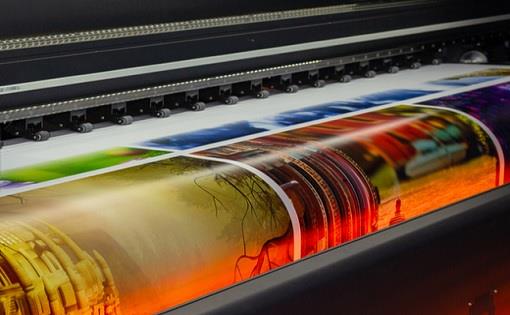Digital Printing Fundamentals Explained
Digital Printing Fundamentals Explained
Blog Article
Digital Printing for Beginners
Table of Contents3 Easy Facts About Digital Printing DescribedThe Basic Principles Of Digital Printing The 45-Second Trick For Digital Printing5 Simple Techniques For Digital PrintingThe Facts About Digital Printing UncoveredOur Digital Printing StatementsThe Basic Principles Of Digital Printing Things about Digital Printing
Modification additionally permits services to stick out in a congested market by developing special marketing materials that differentiate them from their competitors. One of the major advantages of electronic printing is the ability to print variable information. Each printed item can be special, allowing businesses to develop individualized marketing materials that speak directly to their target market.Digital printing additionally permits for modification in the design of marketing products (Digital Printing). With electronic printing, services can create layouts that are one-of-a-kind and tailored to their certain needs.
The Only Guide to Digital Printing
This advantages companies that intend to test different advertising and marketing techniques or launch brand-new product or services. By printing smaller amounts of marketing materials, organizations can lower waste and stay clear of the requirement for excess inventory. Digital printing is also versatile. It can print on various products, including paper, cardstock, plastic, and steel.
By utilizing different products and styles, organizations can develop distinct marketing materials that stand apart from their competitors and attract interest from their target audience. Digital printing likewise provides uniformity. With typical printing methods, there is usually variant between prints as a result of distinctions in ink insurance coverage, stress, and various other factors.
This consistency can help build consumer trust fund and credibility, showing that the business is committed to offering high-quality products. Uniformity is especially important for organizations that intend to build customer count on and integrity. By guaranteeing that every print is consistent, organizations can reveal that they are devoted to giving high-grade products and focusing on the information.
Digital Printing Can Be Fun For Anyone

Furthermore, digital printing generates less waste since it can publish as needed and in smaller quantities, minimizing the requirement for excess stock and products. Digital printing likewise utilizes less energy compared to standard printing approaches. Digital printers do not call for as much power to operate, as they do not need to warm up as a lot or utilize as much power to run.
Our Digital Printing PDFs

Countered printing needs a plate for each color printed. Traditional offset printing is a print technique that uses aluminum plates to transfer ink onto a rubber sheet (commonly referred to as a "blanket").
All about Digital Printing
The equipment's set up prices are high initially, added systems become reasonably much less pricey as the amount increases. Offset printing enables a wide variety of print materials to be utilized throughout manufacturing. It allows the printer to use various paper types, custom coatings, and numerous inks. The high-quality pictures created via balanced out printing make it Find Out More the favored approach, especially among visuals developers, when seeking the greatest color reproduction, detail, and professional-looking prints.
For electronic inkjet printing, ink is transferred directly onto the surface area. Instead than depending on light weight aluminum plates and rubber blankets to transfer a picture, electronic printing uses fluid ink throughout production.
The Ultimate Guide To Digital Printing
Because countered printing can check here mix custom-made shade inks for each job, it will normally obtain the shades spot-on. Count on balanced out printing for tidy, unique kinds and images without streaks or areas.
It costs a lot to start a countered job. You need to spend money into producing home plates, which requires time. Nevertheless, when you've spent it, all of the materials prepare to go, and you'll spend much less on big offset jobs than a digital print, which is concerning the exact same per item despite just how large the work obtains.
Digital printing is less expensive for low-volume tasks. The price per device goes down for electronic printing, so at some factor, they crisscross. Changing info within a single print task.
The Main Principles Of Digital Printing
While electronic printing or inkjet printing is the preferred selection in the present times, there are compelling factors to transform from balanced out to electronic printing systems. When printing balanced out or electronically, critical choices and processes are involved in shade matching.
Industrial inkjet his explanation printing uses versatility for printing on lots of various substratums. Digital printing is excellent for consumers that do not call for longer runs and warehousing products.

One advantage of digital printing is selecting from a large range of digital substrates. With countered printing, substrates make up, typically, 30% of the expense of the job. With electronic printing, the price of the substratum in the general task is minuscule. This permits for even more options than ever previously, and that benefits marketers and businesses.
Our Digital Printing Statements
drop-on-demand is the second printing innovation to think about. Continuous inkjet systems need significant maintenance, more driver training, and greater downtime. Equipment costs in inkjet printing are far lower than balanced out printing as there are no plate-making, plates, and press expenditures. Past the capital expense, the prepress equipment and printing presses call for highly proficient operators in offset printing, which adds labor costs.
Report this page